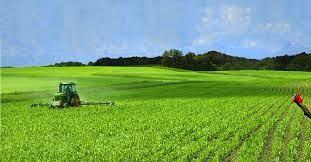
As a contribution to agricultural producers and food safety, research carried out by the Center for the Development of Nanoscience and Nanotechnology (CEDENNA) and the Agricultural Research Institute (INIA) develops a technique that uses fluorescent nanoparticles to detect concentrations of pesticides in fruits and vegetables.
This innovation will facilitate the measurement of the Maximum Residue Limit (MRL) of pesticides in fruits and vegetables, saving time and resources for producers, compared to other traditional methods used to determine levels of these substances to combat pests.
“We intend to address two main points: time and cost. In other words, nanoparticles and new technologies will allow shorter analysis times and lower operating costs,” says Rafael Melo, a researcher at Cedenna and Head of the Pesticide Residue and Environment Laboratory at INIA La Platina. He explains that the producer, after harvesting his fruit, must take it to a laboratory that will have this technique in the future.
There, the extraction/cleaning stage will be carried out and an extract of what has been harvested will be obtained. This extract is the one that undergoes the analysis process to detect, through nanoparticles, the concentration of pesticide in the food. This is key to determine if the Maximum Residue Limit (MRL) of pesticides established by Resolution 892 Exempt, of the Ministry of Health, is complied with.
"This is key, both for the internal and external markets, compared to the current regulations on MRLs that were prepared according to the latest regulations of Codex Alimentarius, the European Union and the Food and Drug Administration, FDA" emphasizes the director of Cedenna and National Award of Sciences, Dora Altbir.
OTHER PROJECTS FOR AGROINDUSTRY
This project joins other Cedenna developments to provide solutions from nanotechnology to problems and challenges of agribusiness.
Currently, for example, new packaging is being worked on that incorporates nanoparticles with antimicrobial, antioxidant or ethylene-absorbing capacities, extending the shelf life of foods. Added to this is a sensor to detect pathogens, such as listeria, which can deliver results in situ and in a few minutes, providing a significant reduction in time and costs.
“At Cedenna we do science at the service of Chile and its inhabitants, seeking innovative, reliable and safe solutions to problems in various sectors: environment, agribusiness, mining, energy, among others. We have extensive experience in the use of nanomaterials, and we have specialized teams to be able to impact various areas”, says Dr. Altbir.
- Log in to post comments







